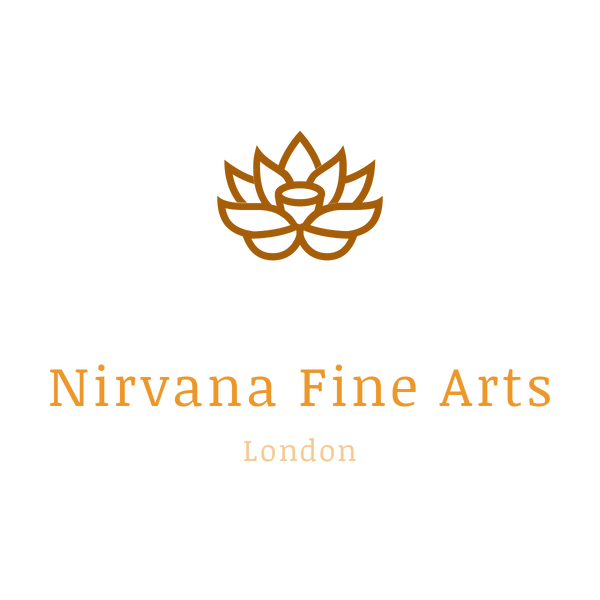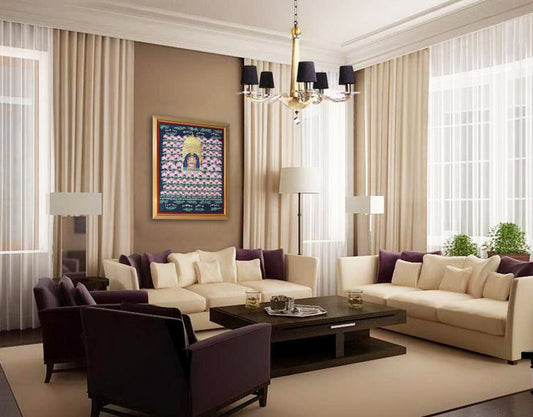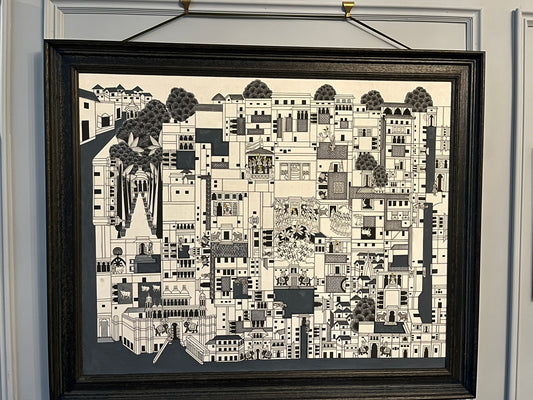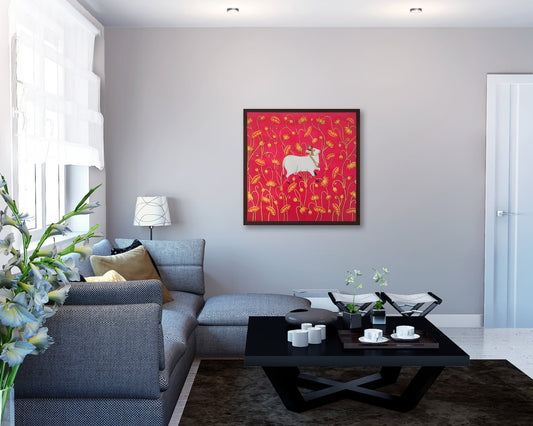
Indian Art Gallery in London
Art is essential in preserving the cultural identity of societies
Nirvana Fine Arts emerged from this very ethos, dedicated to bringing authentic and traditional Indian art form directly from their source to doorsteps in the UK and beyond.
Our online store showcases our art collection which can be viewed in person at our London Home Gallery. Furthermore, we offer a bespoke, fully customisable service(including size and colours) and can be stretched and framed according to your taste.
Our London Gallery, located in historic and leafy Greenwich town welcomes everyone (by appointment) to come and see what we have to offer.
Should you happen to live in the greater London Area, we can hand deliver and help you mount your painting in your house.
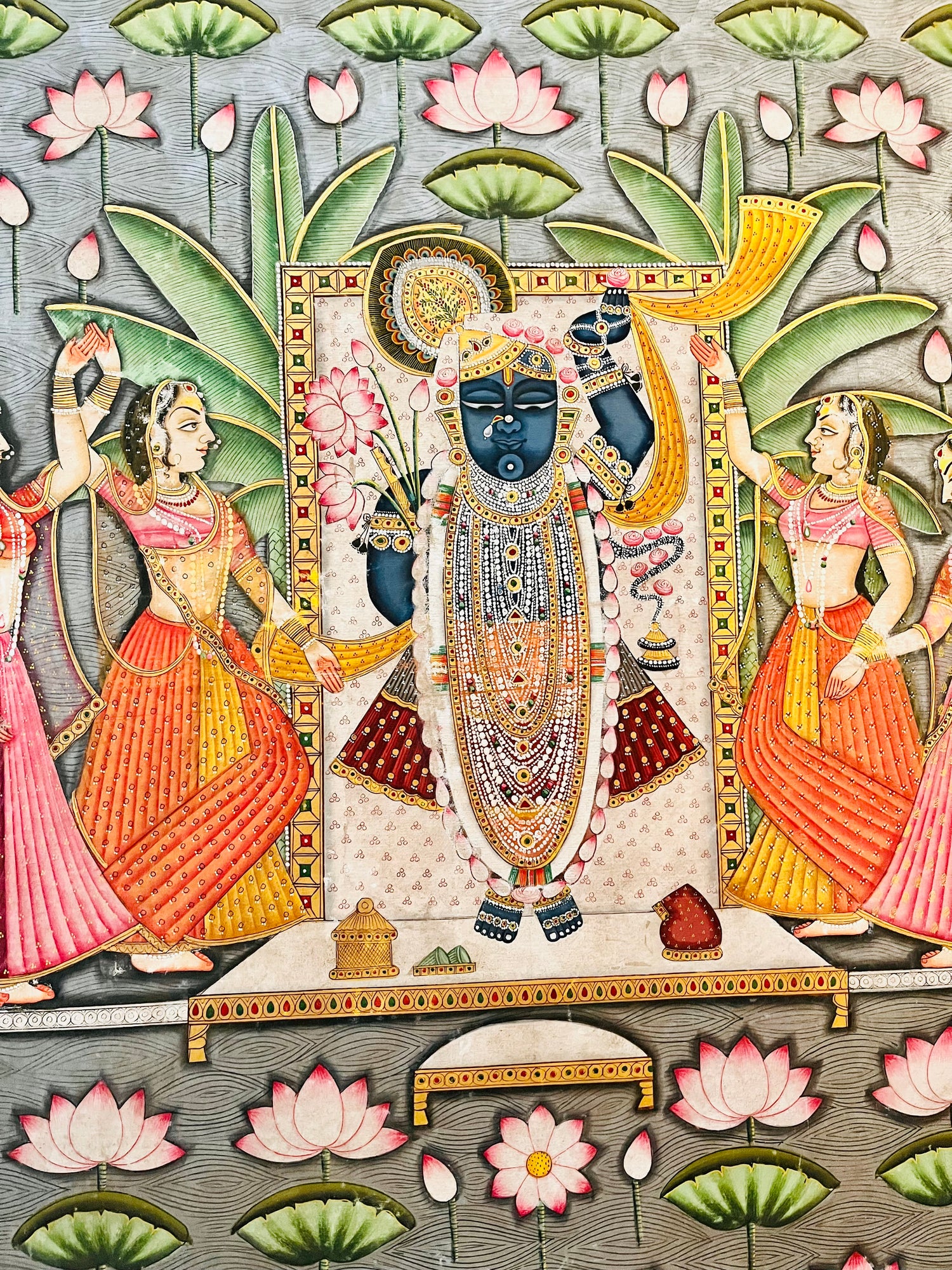
Pichvai
Pichvai (also pichwai, pichhavai, pichhvai, pechhavai etc), literally meaning 'that which hangs from the back' from the Sanskrit words "Pichh" means back and "wais" means hanging, are large devotional Hindu painted pictures, normally on cloth, which portray Krishna.
They are mainly made to hang in Hindu temples of the Pushtimarg devotional tradition, especially the Shrinathji Temple in Nathdwara, Rajasthan, built around 1672. They are hung behind the idol of Shrinathji, a local form of Krishna and the centre of Pushtimarg worship, to depict his leelas. Aurangabad was another area associated with them.
The purpose of pichhwais, other than artistic appeal, is to narrate tales of Krishna to the illiterate. Temples have sets with different images, which are changed according to the calendar of festivals celebrating the deity.
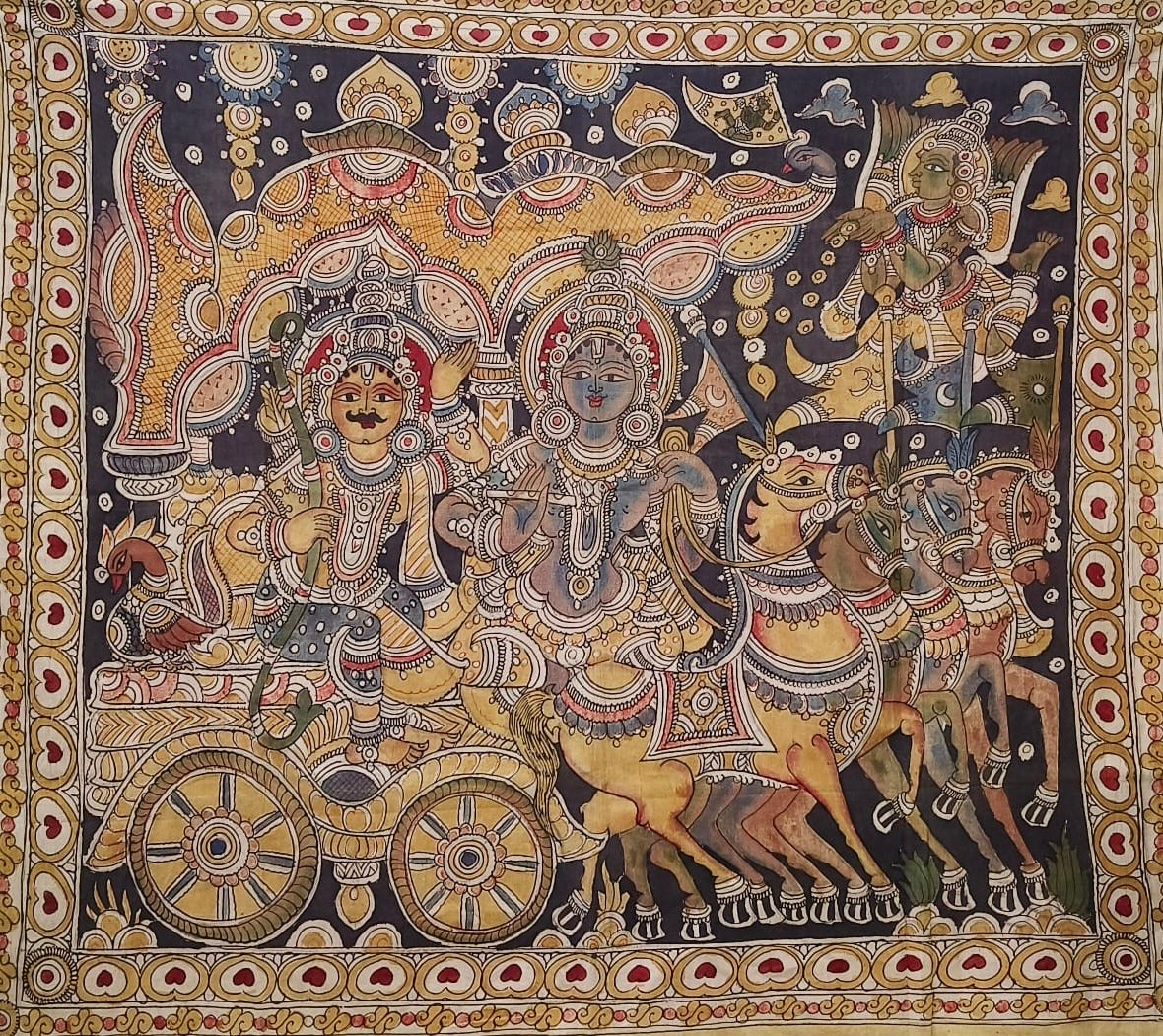
Kalamkari
Kalamkari is a type of hand-painted cotton textile produced in the Indian state of Andhra Pradesh. Only natural dyes are used in Kalamkari, which involves twenty-three steps.
There are two distinctive styles of Kalamkari art in India – Machilipatnam style and Srikalahasti style.
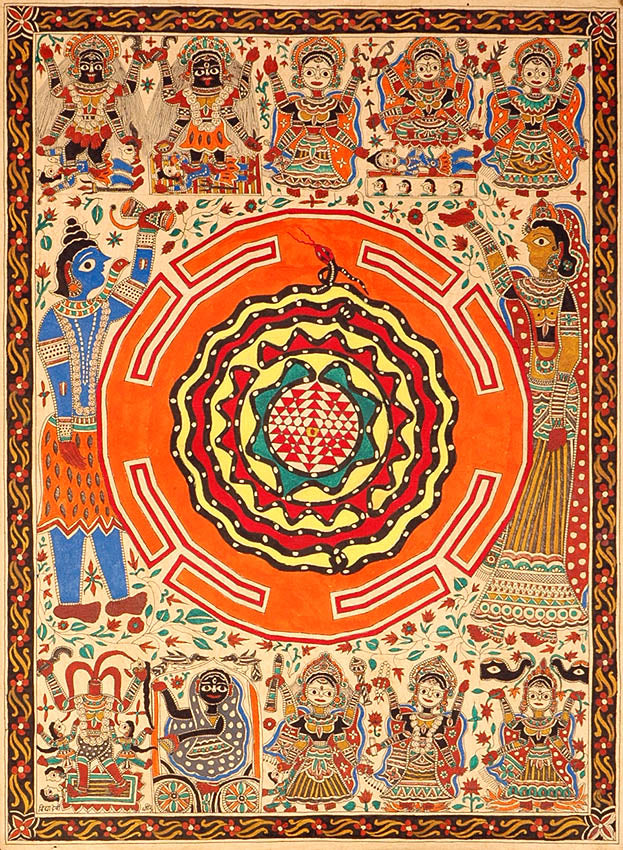
Madhubani
Madhubani art (also Mithila art) is a style of painting practiced in the Mithila region of India and Nepal. It is named after the Madhubani district of Bihar, India, which is where it originated.
Jitwarpur and Ranti are the two most notable cities associated with the tradition and evolution of Madhubani art.
The art was traditionally practiced by female members of Brahman and Kayastha castes.
Artists create these paintings using a variety of mediums, including their own fingers, or twigs, brushes, nib-pens, and matchsticks. The paint is created using natural dyes and pigments.
The paintings are characterized by their eye-catching geometrical patterns. There is ritual content for particular occasions, such as birth or marriage, and festivals, such as Holi, Surya Shasti, Kali Puja, Upanayana, and Durga Puja. Traditionally, painting was one of the skills that was passed down from generation to generation in the families of the Mithila Region, mainly by women. It is still practiced and kept alive in institutions spread across the Mithila region. Kalakriti in Darbhanga, Vaidehi in Benipatti in Madhubani district and Gram Vikas Parishad in Ranti are some of the major centres of Madhubani painting which have kept this ancient art form alive.
-
Buddha on the Lotus Pond
Vendor:DarshanamRegular price £500.00 GBPRegular priceUnit price / per -
City Map of Nathdwara (monochrome)
Vendor:Nirvana Fine ArtsRegular price £1,600.00 GBPRegular priceUnit price / per -
Cow in Kamal Talai
Vendor:DarshanamRegular price From £143.00 GBPRegular priceUnit price / per
